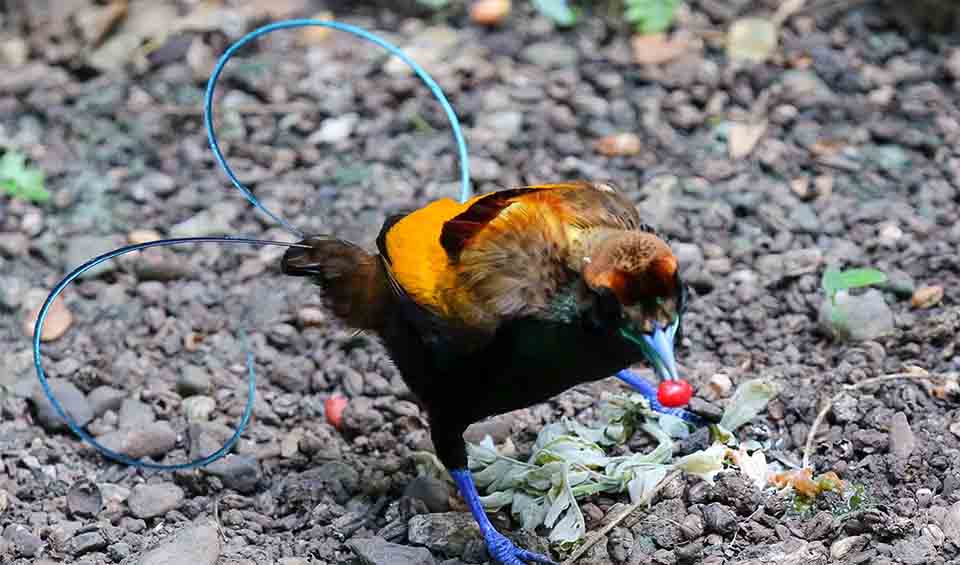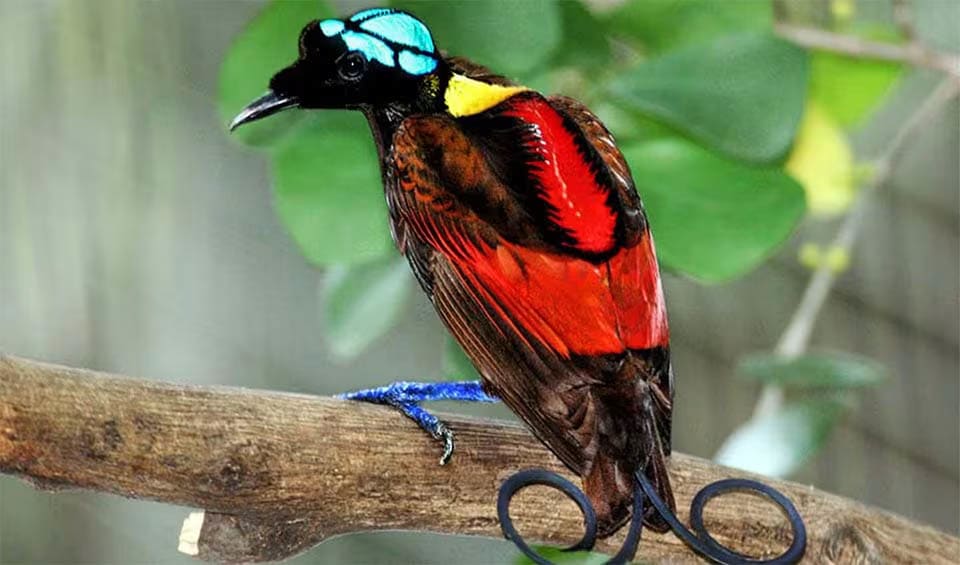Diphyllodes
In Papua New Guinea, its feathers have been used for centuries in traditional ceremonies and as adornments in the daily lives of indigenous peoples
More widely recognized by its enchanting common name, the bird-of-paradise, it comprises some of the most visually stunning and ornately decorated birds on the planet. These birds are native to the dense rainforests of New Guinea and surrounding islands, where their presence is both revered and celebrated, not only in the local cultures but also by bird enthusiasts and naturalists worldwide.
These birds, particularly the males, are adorned with an array of spectacular feathers that range in color from vivid blues, fiery oranges, and deep greens to iridescent blacks. The males are equipped with elongated feathers that extend from their beak, wings, or tail. These feathers can be manipulated during their elaborate courtship dances, where they transform themselves into what appears to be a completely different creature—a display designed to attract the less flamboyantly colored females.
The most famous species within this genus include the Wilson’s bird-of-paradise and the King bird-of-paradise. The Wilson’s bird-of-paradise, for instance, showcases an incredible burst of colors with a turquoise blue crown, a yellow cape, and a pair of spiral tail feathers that add to its mystical appearance. The King bird-of-paradise is no less spectacular, with its red and white plumage and green-tipped fan-like flank plumes, not to mention its two long, wire-like tail feathers that end in green disk-like tips.
These birds are also known for their unique mating rituals, which are among the most complex and visually fascinating in the animal kingdom. The males clear a patch of forest floor, removing debris and leaves to create a ‘stage’ for their performances. They then perform a dance that includes a series of movements, sounds, and even what can be described as poses to showcase their plumage and overall vigor to prospective mates.
Species in this genus
Wilson’s bird-of-paradise
Relatively unknown to the Western world until 1996, when David Attenborough and his crew captured its courtship dance on cam for the first time


